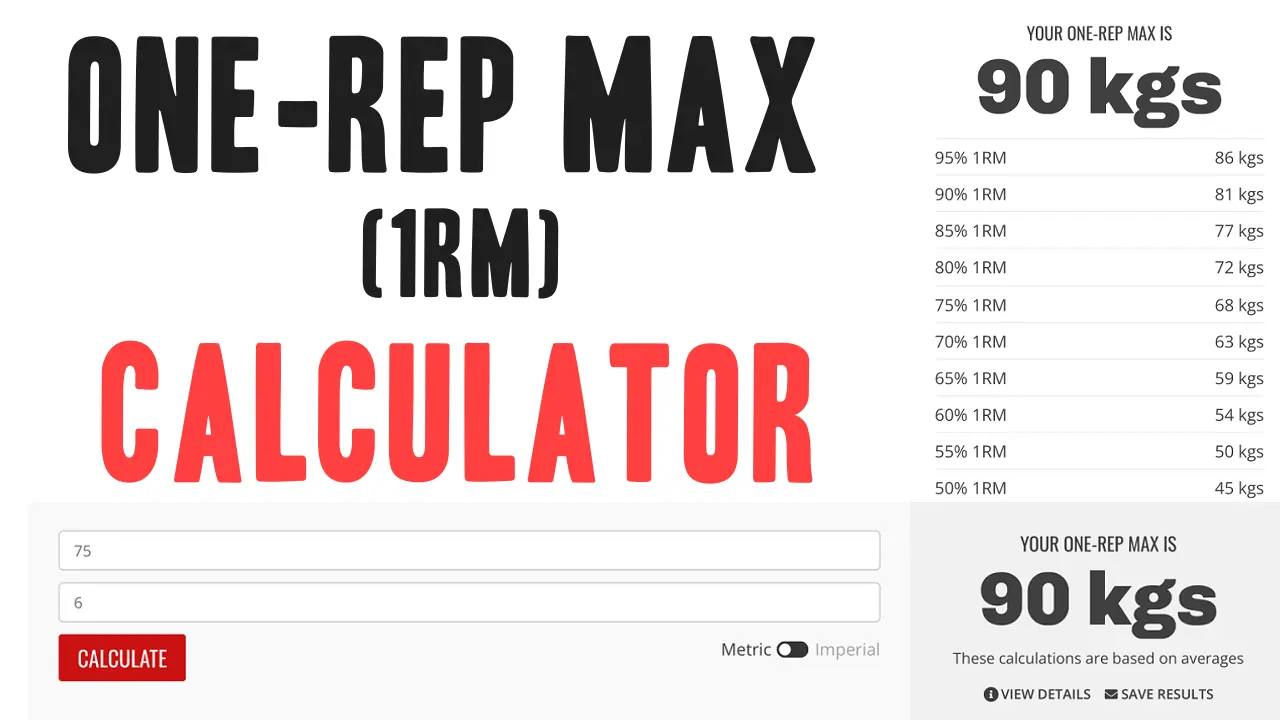One-rep max (1RM) is the maximum weight a person can lift for a single repetition in a specific exercise. It’s not just a number; it’s a valuable tool that can shape your workout routine, enhance performance, and help you achieve fitness goals more effectively.
Calculate Your One-Rep Max (1RM)
- Input Weight Lifted
- Input Number of Reps
- Calculate
For example, if you were performing bench presses and lifted 90 kilograms for 5 repetitions, you would enter “90” as the weight and “5” as the number of reps into the 1RM calculator.
How do you use 1RM in a workout?
These guidelines provide a framework for designing a comprehensive training program that addresses various aspects of fitness, including endurance, strength, hypertrophy, and power. Depending on your specific goals and fitness level, you can tailor your workouts by adjusting the sets, reps, rest periods, and intensity to suit your individual needs.
| Training Goal | Sets | Reps | Rest Period | Intensity / Weight |
| General fitness | 1-3 | 12-15 | 30 to 90 seconds | Varies |
| Endurance | 2-4 | 12-20 | Up to 30 seconds | <67% of 1RM |
| Hypertrophy | 3-6 | 6-12 | 30 to 90 seconds | 60% to 85% of 1RM |
| Muscle strength | 2-6 | <6 | 2 to 5 minutes | >85% of 1RM |
| Power: Single rep | 3-5 | 1-2 | 2 to 5 minutes | 80%–90% of 1RM |
| Muscle Power | 3-6 | 1-3 | 2 to 5 minutes | 30%–60% of RM |
Why do you need to calculate your 1RM?
Overall, calculating your 1RM is essential for effective and efficient strength training. By knowing your 1RM, you can optimize your performance in strength-based activities such as powerlifting, weightlifting, and other competitive sports. Understanding your maximum lifting potential allows you to strategize and train more effectively for competitions or events.
Setting Training Intensity: Your 1RM serves as a reference point for determining the appropriate weight to use for different training goals. For example, if your coach prescribes a hypertrophy-focused workout with lifting at 70% to 80% of your 1RM for 8-12 repetitions, understanding your 1RM helps you precisely calculate the weight you need to lift within that range.

Setting Realistic Goals: Armed with knowledge of your 1RM, you can set realistic and achievable goals for your strength training journey. Whether your objective is to increase muscle mass, improve muscular endurance, or enhance power output, understanding your 1RM allows you to establish clear milestones and track progress over time.
Progressive Overload: Progressive overload is a fundamental principle of strength training, and your 1RM plays a central role in its implementation. By periodically testing and reassessing your 1RM, you can adjust training variables such as intensity, volume, and frequency to ensure continued progress. This systematic approach to training promotes muscle growth, strength gains, and overall performance improvements.
Optimizing Training Efficiency: Knowing your 1RM enables you to optimize the efficiency of your workouts. Instead of guessing or randomly selecting weights, you can tailor your training intensity to match your individual strength capabilities. This precision ensures that you’re working at an appropriate level of intensity to stimulate muscle growth and maximize results while minimizing the risk of overtraining or injury.
In summary, the 1 rep max serves as a foundational tool for structuring workouts, setting goals, tracking progress, and optimizing performance in strength training and fitness activities. By leveraging your 1 rep max effectively, you can tailor your training program to maximize gains and achieve your desired outcomes.

